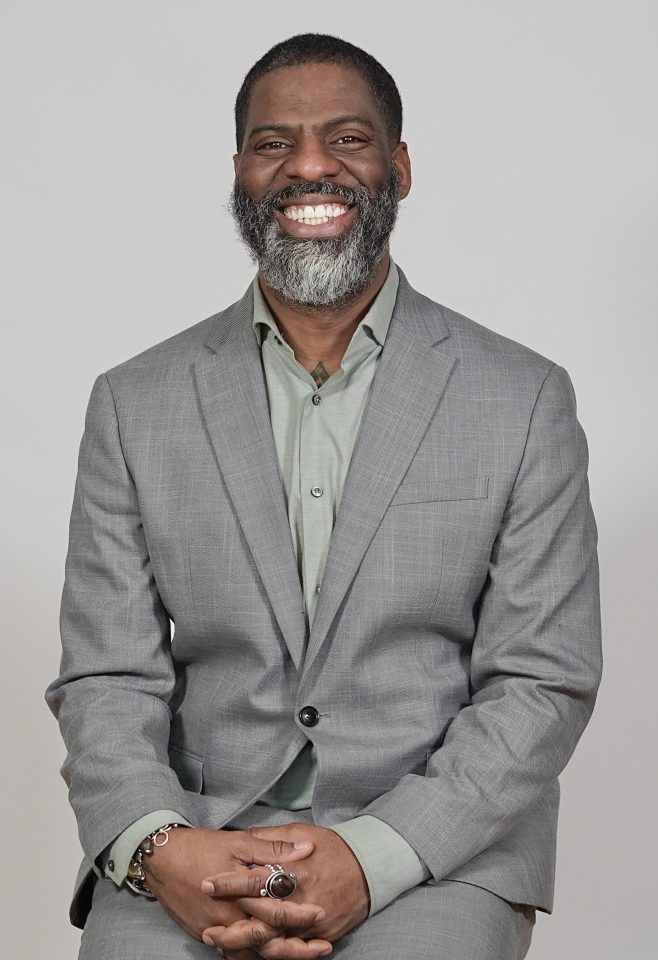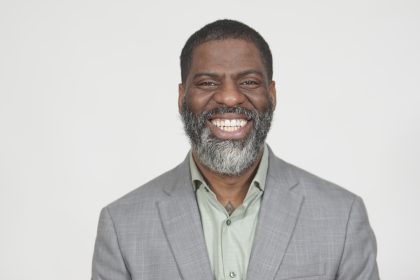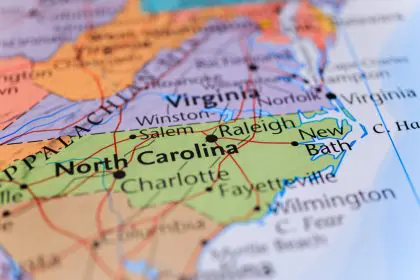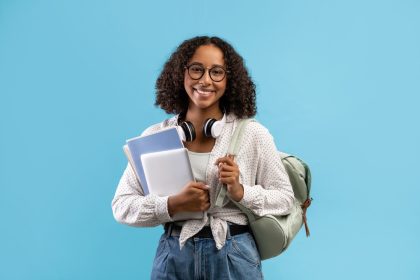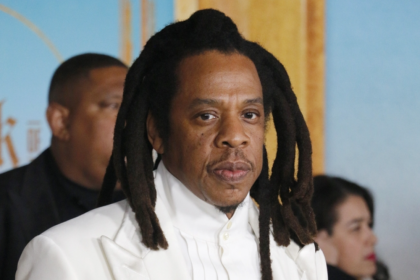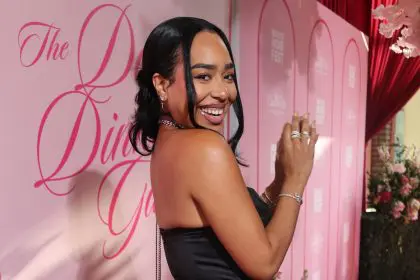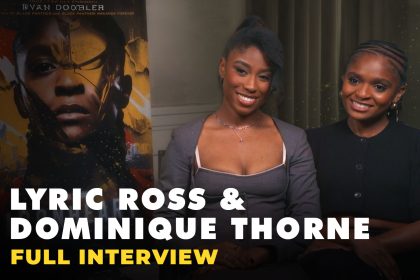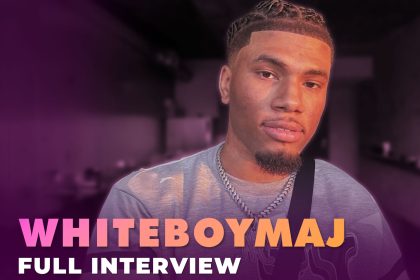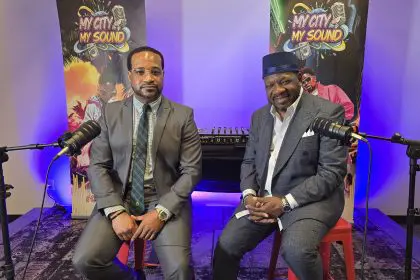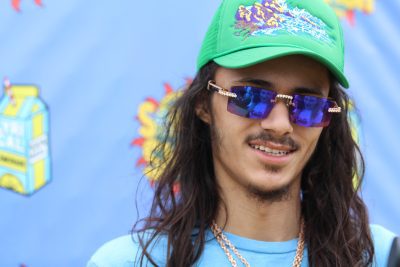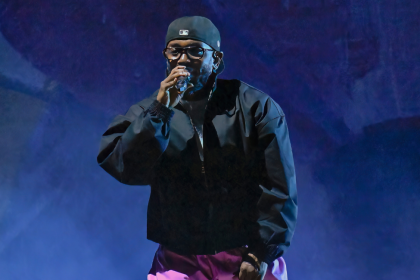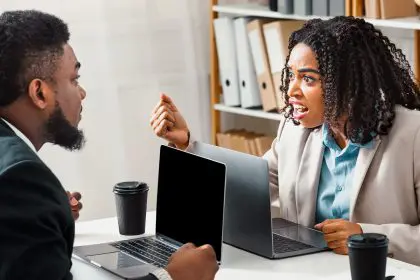In a compelling interview, Dr. Che “Rhymefest” Smith, Grammy and Oscar-winning songwriter and newly elected Chicago Public School Board member for the 10th District, discusses his vision for transforming education through community collaboration. Known for co-writing hits like “Jesus Walks” with Kanye West and the Academy Award-winning “Glory” with John Legend and Common, Smith has now turned his creative energy toward educational reform in the city that raised him.
As a product of Chicago Public Schools who experienced firsthand the challenges of an education system that failed to recognize his potential, Smith brings a unique perspective to his role. With less than 30 days in office at the time of the interview, he shares his personal journey and ambitious plans to bridge the gap between educational institutions and community needs.
What gap in educational access or community support drove you to become a change maker?
It’s great to be thought of as a change maker, I was just speaking to a friend about the true change starts when one is ready to change within. So we can talk about gaps in equity that drove me to run for the school board or to travel the world and do music or to lead discussions at the University of Chicago. All of these things outside, but really it’s the inside wanting to be at your highest potential from where you come from that didn’t serve fulfillment, that didn’t serve your gift, that didn’t serve critical thinking and understanding when that’s what not only I craved, but when I go into these schools, all young people crave being at their highest potential. Everyone wants to learn, everyone has the possibility to be a great student.
When I’m asked the question, what gap in equity led to me wanting to change from the inside out? I think about the fact that I am a product of Chicago Public Schools. I did great in elementary school, I went to a school called Bryn Mawr, it’s where Michelle Obama went to that school, now it’s called Bouchet International. I did well in that school in elementary, it was high school where I felt as though I was being warehoused.
My talents and my gifts weren’t being spoken to, when I began falling behind academically, there was no support and I fell behind so much that when I went to the principal, the dean, and I said, what do I have to do to graduate? And I’m a junior, and he looked at my record and said, “Mr. Smith, you’re supposed to be a junior, you don’t got enough credits to be a freshman. You gotta go to school for another three to four years”. How did I get this far in grade level, but not in skill level without anybody, as a child, helping me? That’s my “Why’.
That’s why I ran, no child deserves to be uninformed, misinformed, warehoused, not educated, no child deserves that. That’s what led to me saying, I’ll take another path other than institutional school, I didn’t know that I could learn, but through experiences and blessings and community, people like Dr. Donda West, Dr. Timuel Black, Dr. Carol Adams, Reverend Jesse Jackson, the community put their arms around me, showed me I could learn, lifted me up, and that’s why I ran for Chicago Public School Board because every child deserves that, especially if we are gonna be paying our tax dollars and six out of every 10 of your property tax dollars, go to schools. That means we are paying as a community for our children to have a robust, joyous, rigorous education that doesn’t forget about them, or warehouse them, or leave them behind, that’s my “why”, we deserve it.
How have you reimagined traditional approaches to education to better serve today’s learning?
A child may not know how to write cursive, cursive may not even be taught in schools, cursive to some children may look like hieroglyphics, but it doesn’t mean that child can’t code you under the table, it doesn’t mean that that child, our children, don’t wanna learn things that are part of modern economies that we may not even have access to. So I think the reimagination of education has to be with a mind toward the future, what does this country need? We need people to design airports that’s huge, the best airports in the world are not in America.
The best airports in the world are in London, are in Dubai, are in other countries, Asian countries, we want to have a modern global outlook for our children. Do our children have passports? There should be passport programs in our schools. Do our children get mandatory financial literacy programs, not just in high school, in elementary school, in seventh and eighth grade? A child should know how to open up a bank account, how to balance that bank account, have an introduction to entrepreneurial mindsets, and we can track that. When you are a junior in high school, what does your bank account look like? Do you still have it?
Did you start a business? What does that look like by the time you are a junior in high school? Get our children thinking early. Create opportunities and collaborations from the assets that already exist in our city, the public libraries, if we don’t have a librarian and a library in every school, why aren’t we working with the Secretary of State and our public libraries to say, how can a school like CVS have a librarian in their school to increase library cards, business done with the connections to the community libraries and the schools having the supports and needs that maybe CPS can’t afford in a budget? How can we work together? When we’re talking about innovation, it’s really about collaboration, how communities work together in a modern world for a modern economy and a modern education.
Share three innovative programs you’ve developed that have transformed lives in your community?
This is where I like to remind the community, I’m not doing it on my own, we can only do it together, and there have been organizations like CHAMPS Mentoring, Vondale Singleton, who’s doing great work in the community and we need to take that model right there and figure out how to do restorative justice practices in our schools. So, I stay close working with Vondale Singleton from CHAMPS Mentoring and the Obama Foundation and what they’re doing with My Brother’s Keeper. There are programs in Chicago State like Grow Your Own or Call Me Mr., where they are training new teachers, young black males to become teachers where they can work in their high schools and get dual credit for college, learning to become a teacher.
Those programs already exist, it’s not for me to recreate the wheel or create something new and this is what’s beautiful about this opportunity to serve on Chicago Public School Board. I get to work with organizations who have already been engaged in that work of innovating, organizations who are already making strides. Chicago Public Schools have started the Black Student Success Plan in Black History Month, which was created by a cohort of community members and stakeholders and business owners to say what does Black student success in Chicago Public Schools look like, with tangible programmed items in the schools, wraparound services, apprenticeship programs for students, this work has already begun. All I have to do is attach my platform, attach my energy and attach my service to the people in our community who have already been making those innovative efforts and it’s all around us and it is my duty to connect community to those efforts and that’s what I’m doing.
How do you approach building bridges between educational institutions and community needs?
I would be remissed if I didn’t say that there’s been a lot of distrust between academic institutions and communities. Chicago went through a 51 school shutdown and it destabilized our communities, this is the outcome of school consolidations and shutdowns without community input. I’m not saying that there weren’t issues with some of our schools, whether we wanna talk about academic performance, whether we wanna talk about under-enrollment in our schools, in some cases violence, but the system wasn’t and isn’t broken.
Many people believe the system that destabilized our communities was acting exactly as it was designed to do. The opportunity we have now as elected officials with an elected school board is that we can now redesign a system to work for equity between all of our schools and all of our students. This is an opportunity for community to meet with their elected school officials and work with us to design what equity truly looks like. That distrust between the institution and the community still exists and it is incumbent upon us as elected officials to be transparent, to be accessible and to listen to the concerns of our constituents, of our neighbors, of our students, of our teachers and work together, number one, to heal the trust, number two, to create a new way, number three, to build it together, and with that being said, that’s why I’m making a push right now, not just for academic change or high school change, but for systematic change. When I say systematic change, what I mean is why are we defining the head of CPS as a CEO? No district in the state of Illinois, and I can’t think of any district in the country besides Chicago that defines its head of schools as a CEO. These schools, to me, are not businesses and our children are not commodities, even though we deal with a $10 billion budget.
We have to deal with it from a standpoint of what’s best for equity and learning, you don’t wanna pilot without a pilot’s license, you don’t wanna doctor without a medical license, why would we have the head of schools not be a superintendent? And that’s what I’m pushing for, that’s institutional change. I’m making a resolution now in the board to be amended by the state code for the criteria and definition of the head of CPS to be a superintendent that has experience in education, and 35 years of having a CEO as head of our schools and we’re $800 million in a deficit. It hasn’t worked, and so we need institutional change so that the community can have trust, and that’s what I’m working toward.
What role does hope play in your strategy for community transformation?
I believe hope plays the role it always has since our people landed in the diaspora and landed on the shores of America. They told us that there was a door of no return, they had a door marked no return in Ghana and Senegal, but now our people are returning to those doors by the millions, and hope, I believe is a terrestrial word for prayer. It is a surface word for intention, what is your intention? And how do you move intentionally? Many people have lost the intention for Chicago Public Schools and what their children can be in this system.
Many people have lost hope in their schools. I’ve been visiting our schools and you take an elementary school like O’Keeffe in South Shore where when I was young I was scared to walk past that school let alone go to it, but O’Keeffe today has the Joffrey Ballet for Children, has a piano, science lab, it is a turnaround school where teachers are being trained to be teachers and the principal, Ms. White, over there has her pick of new teachers. O’Keeffe is filled with about 600 students almost at capacity, it is a beautiful school that I would be proud to send my child to, O’Keeffe has orchestra, pianos and benches for children to learn. They have support systems and pre-K programs that are just outstanding.
There is hope, what we have to get through is the stigma that we’re given as a program that when something is bad or when something doesn’t work at one time it can never work or it can never reform or it can never, that’s a mindset. I am seeing transformation every day in our system and I think that’s the biggest thing. It’s not me as an individual, it is community that came together to create mentorship programs at O’Keeffe and new parks at Bouchet and O’Keeffe that children can play in healthy spaces. It exists and knowing that that exists, joining that movement, adding your gift, adding your contribution to it, that’s the hope. The hope is your energy to join and to collaborate. The hope is in us to work together to increase great things to be greater and so hope is intentional, work, hope is the prayer and hope is the action of service, and what role does hope play in transformation of our system? It plays the role that people play in working together.
How do you empower individuals to become architects of change in their own communities?
Number one, we set the example, it’s up to each of us to set the example of what change looks like by how we approach each other with compassion, with the work and service that we do, and with an invitation, we have to invite each other to come on, work with me, collaborate with me. What is your gift? What is the thing that you like to do? And what you do doesn’t have to be what I do, but when you do what you do and I do what I do and we do that together, that is the example of community and of collaboration.
What new models of learning or community engagement have you found most effective?
We have the platforms of social media that we need to be taking advantage of. These are tools and we need to use all of our tools of reaching out to each other, but other than those tools, the old methods still work. Talking to people, calling people, having meetings with your neighbors, bringing community together. I’m working with Operation Push, where as a board member, I get to come and update the community and be transparent and answer questions and listen to the community. That’s no different than what the Reverend Jesse Jackson was doing 40 years ago. Sometimes we believe we always need a new way to do things when all we need is more people participating in what has always worked.
How do you measure transformation beyond traditional educational metrics?
When we say educational metrics, we’re talking about the data. We’re talking about what data says and how we move and create a new standard based on the information, the data that we have. Well we have to be innovative with data, some people say, well data has traditionally been used against us and data can be manipulated, but it doesn’t change the facts of the information we have.
Metrics are there to say, this is the case. This being the case, what do we do now to create transformation? Now transformation, depending on who holds the data, can be good or it can be bad. So first thing we have to ask is what kind of transformation do we want to see? I believe the second thing we do is say when it comes to transformation, are we transforming a person or a system?
In my position of Chicago Public School Board member, I can design policy to transform the system, transformation of a person is for them to do. That is their work, that is the work of parents, that is the work of community, that is the work of the individual themselves to transform themselves, but in providing equity within the transformation of a person and a community, the system should provide equity so that that transformed person comes into a system that allows them to thrive in their transformation, and that is what I am working on through policy.
This is why it is important for politicians, this is why it is important for stakeholders to be in tune with community, to be in tune with who is taking those AP classes, who is ready to go to the next level. As we transform the system and even those who have fallen behind, are looking to transform themselves into their highest potential, and we need to be in tune and working with community so that as those personal transformations are taking place, institutional transformations match it. That is what we are working to do.
What strategies have you implemented to ensure sustainable long-term community impact?
I believe just by the community, the teachers, the stakeholders that got together and fought for an elected school board, that was the beginning of the transformational impact that they are going to see in academics and schools having the support they need. I will give you an example, I visit schools who have never seen a board member ever come to their school and ask questions about what you need or what kind of support would best help these students academically, I am getting letters as a board member from students saying, Rhymefest, we love your music.
We followed you before you got on the board, I go to a Chicago vocation academy, this is what my school needs, we like to see our airplane hangar, who knew CVS had an airplane hangar? We like to see our airplane hangar open back up so we can train there in aviation. All I’m saying is the community already has the answers, the children already have the answers, what am I doing? I’m doing something that because the community worked to have an elected school board, the community never saw before, I’m showing up, and just showing up, just listening and taking that information back to the Chicago public schools, to how we make decisions, to how we design policy, that’s us working together.
That’s it, it’s not me as an individual, I always have to include, it is we as a community that’s making that change, and that’s me giving the people who came before me and allowed me to even be in this space, that’s me giving them the honor, and giving the children who attend these schools every day. I’m visiting schools, they go to these schools every day, they endure whatever it is that they see that they need that support in their school. They endure that every day, many of our children are afraid because the federal government is hanging out around their schools.
ICE is hanging out around schools, chasing children down the block waiting to arrest their parents, and I’m talking about our Hispanic brothers and sisters, I’m talking about our African brothers and sisters who are in America to find new opportunities, I’m talking about our Haitian and Caribbean diasporic brothers and sisters, our Arab, Southeast Asian, Indian brothers and sisters our Asian brothers and sisters. Children deserve to be in a safe space and don’t deserve to be in fear when they’re trying to have an education.
Their parents deserve to be able to deliver them and pick them up from that space without fear, what are we doing that’s different? We have a plan, know your rights, and I’m so happy to see that CPS has been going school to school informing parents and community members and teachers of the right to say, if you don’t have a warrant, you can’t come into school. If you’re not a part of our academic day, you’re not allowed in this school. We have a plan, and so I’m happy to see that plan being implemented, and I think it’s those type of things that are the change that just people haven’t seen before now. New things are happening, this is whether you know it or not, we’re going through a new era in education in Chicago.
Finish these sentences:
Education becomes transformative when? Education becomes transformative when everyone participates.
Community power is built through? Community power is built through service, collaboration, and a call to action.
Hope manifests in communities when? Hope manifests in communities when we begin to see our actions have results.
True change happens by? True change happens by commitment.
We create lasting impact by? I found lasting impact in organically showing up and doing the work, doing the work authentically. Chop wood, carry water, chop wood, carry water, that’s the lasting impact.
Share two moments when you witnessed the spark of transformation in your community?
I’m going to give two moments where I witnessed a spark of transformation in my community, and these two moments, I believe will impact our public schools, but it was just in community. One is in Englewood where R.A.G.E Englewood and my friend Asha Butler help get the program going where people could buy lots and buy parts of their community for a dollar when they innovated how they would use that space, and now Englewood has gardens and different educational and entertainment like sex of the community where people have more stake in it, more pride in it. You see the neighborhood of Englewood transforming from organizations like R.A.G.E Englewood who advocated for community ownership to increase community pride, community love, and community obligation, that was a spark that should not be or go unnoticed, unrecognized, and unpraised.
Another instance of where I saw a spark happening in community that really began to awaken the people. I got to talk about the organization IMAN with my brother Rami, the conversation that Rami as a Palestinian man was able to have with other Arab owners of stores in the community, in the mostly black community, to say, Hey, we got to put fruit in here. We got to put vegetables in these stores and in these gas stations, bananas, oranges, apples, fresh groceries so that we can have a good relationship with our community, building housing for returning citizens. The work Rami has been able to do around the area of IMAN has been transformational and it’s been collaborative between races, cultures, the way we eat, our health, spiritually. This is something that I believe all Chicagoans can take pride in, honor, and have hope of how to change their area.
